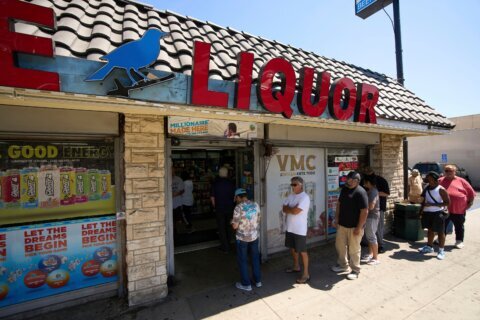WASHINGTON — They are said to produce enough waste to wrap around the equator 10.5 times, or more.
The single-serve Keurig Cups, otherwise known as K-Cups, are an inspiration or an abomination, depending on who you talk to. But even the biggest producers of this coffee phenom agree — the little plastic and aluminum vessels could use a little greening while they’re taking over the world.
According to Keurig Green Mountain, 9.8 billion K-Cups were sold in 2014, with the majority headed to landfills after use, old coffee grounds and all. Keurig Green Mountain — which sells the increasingly ubiquitous machines as well as the K-Cups — recognizes this is a lot of trash. K-Cups are not biodegradable, and most of their cups aren’t recyclable — but they produce 80 percent of the Vermont-based company’s $4.7 billion annual revenue.
“We’re tackling this on a number of fronts,” says Monique Oxender, chief sustainability officer at Keurig Green Mountain, in a statement to WTOP.com. “It’s a tough challenge, but we are committed to solving it.”
Green Mountain’s solutions range from making part of the cups from recyclable polypropylene (#5) plastic (recyclable in 60 percent of communities in the U.S., 90 percent in Canada, according to the company) to a take-back program that now delivers millions of cups and pounds of coffee to two cement plants in Quebec and British Columbia, which are converting them into reusable fuel.
Company officials say that by mid-March, three of the four cup types used in the 2.0 brewing system will be made with #5 plastic (right now, only the Vue and K-Carafe packs are #5). Users still have to separate the cup from the lid and filter for recycling, however. Green Mountain hopes to have all K-Cups completely recyclable by 2020.
But that’s a long way, and a ton of waste, away, say conservation experts who believe the cup should be abandoned altogether.
“To me, some of the tried-and-true ways of making coffee represent the least environmental impact,” Darby Hoover, senior resource specialist at the National Resources Defense Council (NRDC), tells WTOP.com. She guesses that most people don’t take the time to separate the cup components for recycling, and if they do, the end result is often too small to recycle anyway. Plus, she contends, the energy and resources expended to make the billions of cups are a waste in the first place.
“It’s a step, and it acknowledges (Keurig Green Mountain’s) responsibility,” she said of the company’s latest moves. “But it’s not a practical solution.”
Even the creator of K-Cups appears to regret his part in what he sees as an encroaching scourge on the earth’s health. In an interview with The Atlantic in March, John Sylvan says he never expected the cups to take off the way they did after they started popping up in office kitchens in the late 1990s. The patent has expired, and there are a number of cups and alternatives on the market. Many of those are nearly biodegradable, the magazine points out, but the new Keurig 2.0 machines will only function with the K-Cups, maintaining Keurig’s domination of the market.
Meanwhile, the environmental backlash is growing. A video purporting a “Cloverleaf”-style K-Cup invasion of the world, urging people to “Kill the K-Cup,” has gone viral.
“I feel bad sometimes that I ever did it,” Sylvan tells The Atlantic, of his invention. He says he doesn’t use the machine himself — it’s too expensive. Boxes of 12-18 single-serve K-Cups go for anywhere from $5.99 to $15.00, depending on the coffee brand.
But he did invent it, and he can’t take it back. And millions of coffee drinkers wouldn’t want him to: They like the convenience of making one cup at a time (and not wasting an entire pot of grounds and water) at home. And in many ways, K-Cups conserve other resources, such as water. Besides, think of all the paper Starbucks cups that never land in the proper recycling bin.
And, well, Keurig coffee sure beats the taste of the old-style coffee makers at the office.
It is not like there aren’t alternatives. Some have tried non-disposable filters in the Keurig machines. Sara Lee’s Senseo pods are made of paper. Nestle’s Nespresso machines use aluminum capsules.
Darby said there are even better options — bean to cup machines are now the rage, or you can simply brew a pot of coffee the old-fashioned way and save the rest in the fridge for iced coffee later. “It may be less sexy, but it’s more effective,” she says.
Green Mountain officials say they are aware of the growing concerns, and that’s why they are not only shifting gears on how the K-Cups are made but investing in broader recycling infrastructure and marketing overall. They are not surprised about the media attention, “because it’s important to consumers,” said Oxender, “and it’s important to us too.”







